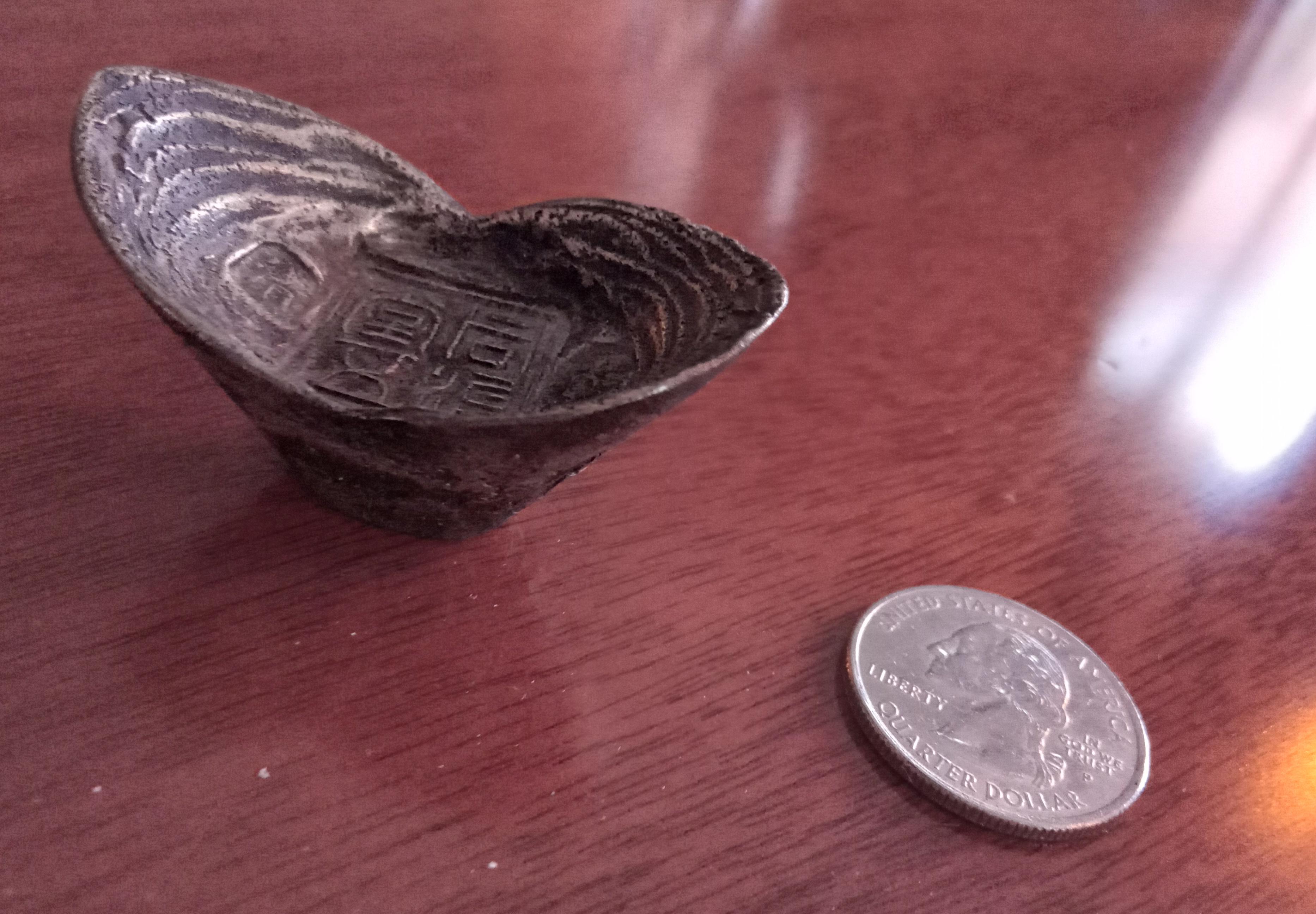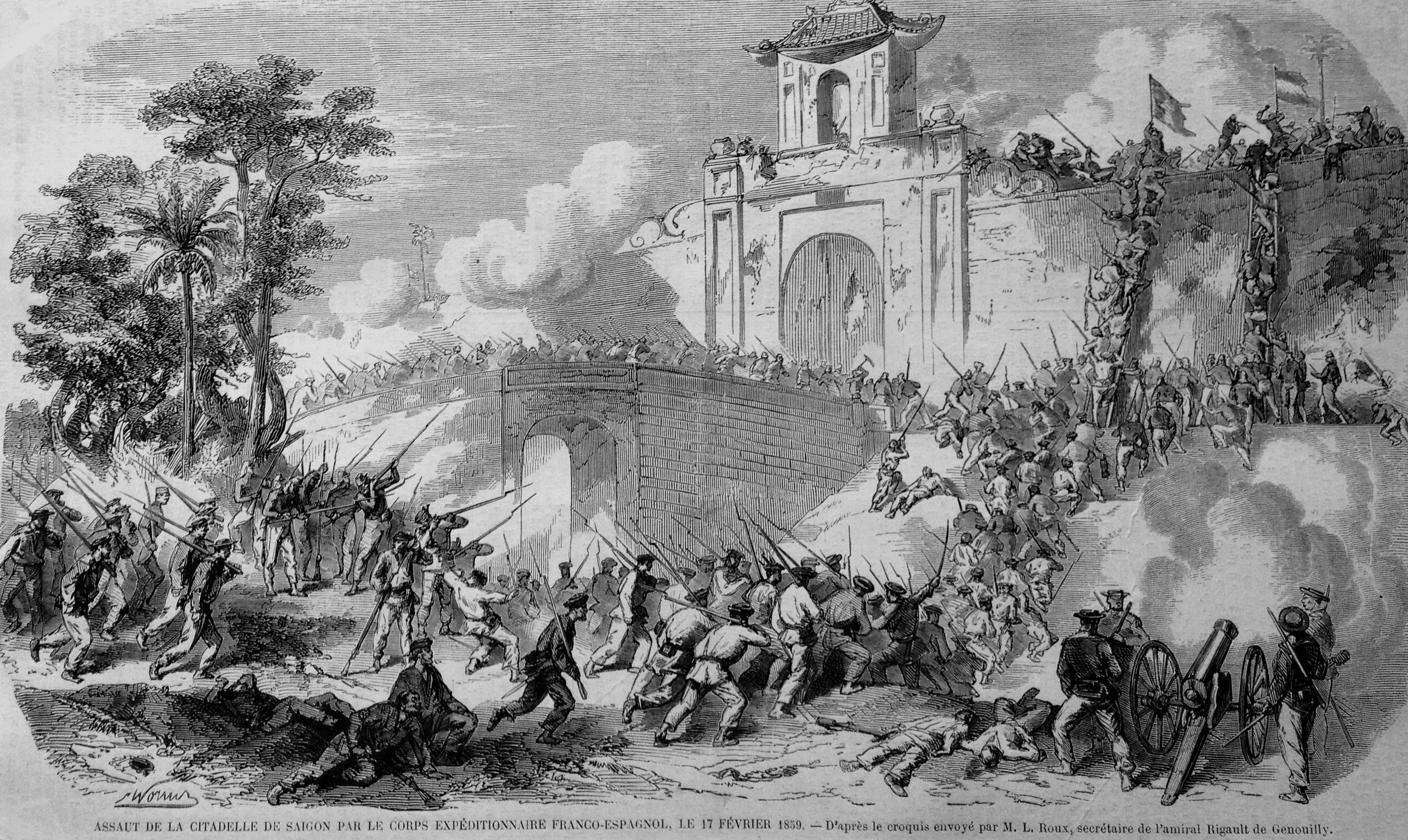|
String Of Cash Coins (currency Unit)
A string of cash coins (Traditional Chinese: , , ; ) refers to a historical Chinese, Japanese, Korean, Ryukyuan, and Vietnamese currency unit that was used as a superunit of the Chinese cash, Japanese mon, Korean mun, Ryukyuan mon, and Vietnamese văn currencies. The square hole in the middle of cash coins served to allow for them to be strung together in strings, the term would later also be used on banknotes and served there as a superunit of '' wén'' (). Prior to the Song dynasty strings of cash coins were called (), (), or (), while during the Ming and Qing dynasties they were called () or ().Chinesecoins.lyq.dWeights and units in Chinese coinageSection: “Guan 貫, Suo 索, Min 緡, Diao 吊, Chuan 串.” by Lars Bo Christensen. Retrieved: 05 February 2018. In Japan and Vietnam the term would continue to be used until the abolition of cash coins in those respective countries. During the Qing dynasty a string of 1000 cash coins and valued at 1 tael of silver (bu ... [...More Info...] [...Related Items...] OR: [Wikipedia] [Google] [Baidu] |
Tael
Tael (),"Tael" entry at the . also known as the tahil and by , can refer to any one of several used in and |
Fengtian Province
Liaoning () is a coastal province in Northeast China that is the smallest, southernmost, and most populous province in the region. With its capital at Shenyang, it is located on the northern shore of the Yellow Sea, and is the northernmost coastal province of the People's Republic of China. Historically a gateway between China proper and Manchuria, the modern Liaoning province was established in 1907 as Fengtian or Fengtien province and was renamed Liaoning in 1929. It was also known at that time as Mukden Province for the Manchu name of ''Shengjing'', the former name of Shenyang. Under the Japanese-puppet Manchukuo regime, the province reverted to its 1907 name, but the name Liaoning was restored for a brief time in 1945 and then again in 1954. Liaoning borders the Yellow Sea (Korea Bay) and Bohai Sea in the south, North Korea's North Pyongan and Chagang provinces in the southeast, Jilin to the northeast, Hebei to the southwest, and Inner Mongolia to the northwest. The Yalu ... [...More Info...] [...Related Items...] OR: [Wikipedia] [Google] [Baidu] |
Beijing
} Beijing ( ; ; ), alternatively romanized as Peking ( ), is the capital of the People's Republic of China. It is the center of power and development of the country. Beijing is the world's most populous national capital city, with over 21 million residents. It has an administrative area of , the third in the country after Guangzhou and Shanghai. It is located in Northern China, and is governed as a municipality under the direct administration of the State Council with 16 urban, suburban, and rural districts.Figures based on 2006 statistics published in 2007 National Statistical Yearbook of China and available online at archive. Retrieved 21 April 2009. Beijing is mostly surrounded by Hebei Province with the exception of neighboring Tianjin to the southeast; together, the three divisions form the Jingjinji megalopolis and the national capital region of China. Beijing is a global city and one of the world's leading centres for culture, diplomacy, politics, finance, busi ... [...More Info...] [...Related Items...] OR: [Wikipedia] [Google] [Baidu] |
Exchange Rate
In finance, an exchange rate is the rate at which one currency will be exchanged for another currency. Currencies are most commonly national currencies, but may be sub-national as in the case of Hong Kong or supra-national as in the case of the euro. The exchange rate is also regarded as the value of one country's currency in relation to another currency. For example, an interbank exchange rate of 114 Japanese yen to the United States dollar means that ¥114 will be exchanged for or that will be exchanged for ¥114. In this case it is said that the price of a dollar in relation to yen is ¥114, or equivalently that the price of a yen in relation to dollars is $1/114. Each country determines the exchange rate regime that will apply to its currency. For example, a currency may be floating, pegged (fixed), or a hybrid. Governments can impose certain limits and controls on exchange rates. Countries can also have a strong or weak currency. There is no agreement in the econ ... [...More Info...] [...Related Items...] OR: [Wikipedia] [Google] [Baidu] |
Leiden
Leiden (; in English and archaic Dutch also Leyden) is a city and municipality in the province of South Holland, Netherlands. The municipality of Leiden has a population of 119,713, but the city forms one densely connected agglomeration with its suburbs Oegstgeest, Leiderdorp, Voorschoten and Zoeterwoude with 206,647 inhabitants. The Netherlands Central Bureau of Statistics (CBS) further includes Katwijk in the agglomeration which makes the total population of the Leiden urban agglomeration 270,879, and in the larger Leiden urban area also Teylingen, Noordwijk, and Noordwijkerhout are included with in total 348,868 inhabitants. Leiden is located on the Oude Rijn, at a distance of some from The Hague to its south and some from Amsterdam to its north. The recreational area of the Kaag Lakes (Kagerplassen) lies just to the northeast of Leiden. A university city since 1575, Leiden has been one of Europe's most prominent scientific centres for more than four centuries. Leide ... [...More Info...] [...Related Items...] OR: [Wikipedia] [Google] [Baidu] |
French Indochinese Piastre
The piastre de commerce was the currency of French Indochina between 1885 and 1952. It was subdivided into 100 ''cents'', each of 2~6 '' sapèques''. The name ''piastre'' (), from Spanish pieces of eight (pesos), dates to the 16th century and has been used as the name of many different historical units of currency. Denominations The currency of French Indochina was divided into the ''piastre'', ''cent'' / ''centime'', and '' sapèque'' units. One ''piastre'' equals 100 cents and one cent equals between 2 and 6 ''sapèques'' depending on the dynasty and reign era.Phạm Thăng. Tiền tệ Việt Nam theo dòng lịch sử. Toronto, Canada. Date: 1995. (in Vietnamess). Page 159. According to that ratio, a French Indochinese piastre coin is worth from 200 to 600 traditional Vietnamese cash coins. The Obverse of the banknotes and coins were inscribed in the French language, while the reverse side had inscriptions written in Traditional Chinese, Vietnamese Latin script, Lao, ... [...More Info...] [...Related Items...] OR: [Wikipedia] [Google] [Baidu] |
Mexican Peso
The Mexican peso (Currency symbol, symbol: $; ISO 4217, code: MXN) is the currency of Mexico. Modern peso and dollar currencies have a common origin in the 16th–19th century Spanish dollar, most continuing to use dollar sign, its sign, "$". The current ISO 4217 code for the peso is ''MXN''; prior to the #Nuevo peso, 1993 revaluation, the code ''MXP'' was used. The peso is subdivided into 100 , represented by "cent sign, ¢". The Mexican peso is the 15th most traded currency in the world, the third most traded currency from the Americas (after the United States dollar and Canadian dollar), and the most traded currency from Latin America. , the peso's exchange rate was $20.50 per euro, $19.80 per U.S. dollar, and $15.50 per Canadian dollar. History Etymology The name was first used in reference to ('gold weights') or ('silver weights'). The Spanish word means 'weight'. Compare the British pound sterling. Other countries that use are Argentine peso, Argentina, Chilean pes ... [...More Info...] [...Related Items...] OR: [Wikipedia] [Google] [Baidu] |
French Indochina
French Indochina (previously spelled as French Indo-China),; vi, Đông Dương thuộc Pháp, , lit. 'East Ocean under French Control; km, ឥណ្ឌូចិនបារាំង, ; th, อินโดจีนฝรั่งเศส, officially known as the Indochinese Union; vi, Liên bang Đông Dương, , lit. 'East Ocean Federation'; km, សហភាពឥណ្ឌូចិន; lo, ສະຫະພາບອິນໂດຈີນ and after 1947 as the Indochinese Federation,; vi, Liên đoàn Đông Dương; km, សហព័ន្ធឥណ្ឌូចិន; lo, ສະຫະພັນອິນດູຈີນ was a grouping of French colonial territories in Southeast Asia until its demise in 1954. It comprised Cambodia, Laos (from 1899), the Chinese territory of Guangzhouwan (from 1898 until 1945), and the Vietnamese regions of Tonkin (French protectorate), Tonkin in the north, Annam (French protectorate), Annam in the centre, and French Cochinchina, Cochinchin ... [...More Info...] [...Related Items...] OR: [Wikipedia] [Google] [Baidu] |
Nguyễn Dynasty
The Nguyễn dynasty (chữ Nôm: 茹阮, vi, Nhà Nguyễn; chữ Hán: 阮朝, vi, Nguyễn triều) was the last Vietnamese dynasty, which ruled the unified Vietnamese state largely independently from 1802 to 1883. During its existence, the empire expanded into modern-day southern Vietnam, Cambodia, and Laos through a continuation of the centuries-long Nam tiến and Siamese–Vietnamese wars. After 1883, the Nguyễn emperors ruled nominally as heads of state of the French protectorates of Annam and Tonkin until the final months of WWII; they later nominally ruled over the Empire of Vietnam until the August Revolution. The House of Nguyễn Phúc, Nguyễn Phúc family established feudal rule over large amounts of territory as the Nguyễn lords by the 16th century before defeating the Tây Sơn dynasty and establishing their own imperial rule in the 19th century. The dynastic rule began with Gia Long ascending the throne in 1802, after ending the previous Tây Sơn d ... [...More Info...] [...Related Items...] OR: [Wikipedia] [Google] [Baidu] |
Tự Đức
Tự Đức (, vi-hantu, 嗣 德, lit. "inheritance of virtues", 22 September 1829 – 19 July 1883) (personal name: Nguyễn Phúc Hồng Nhậm , also Nguyễn Phúc Thì) was the fourth emperor of the Nguyễn dynasty of Vietnam; he ruled from 1847 to 1883. Biography The son of Emperor Thiệu Trị, Prince Nguyễn Phúc Hồng Nhậm was born on 22 September 1829, and succeeded his father on the throne, with the reigning title of Tự Đức, but family troubles caused his era to have a violent start. Thiệu Trị had passed over his more moderate eldest son, Hồng Bảo, to give the throne to Tự Đức, known for his staunch Confucianism and opposition to foreigners and innovation. As a result, and due to the repressive policies of the previous Nguyễn dynasty emperor, there was now a great deal of dissatisfaction with Nguyễn rule and a legitimate royal figure to rally this opposition. Rule Cholera and dwindling In summer 1849, one year after Tu Duc's inaugurat ... [...More Info...] [...Related Items...] OR: [Wikipedia] [Google] [Baidu] |
Coin Collecting
Coin collecting is the collecting of coins or other forms of minted legal tender. Coins of interest to collectors often include those that were in circulation for only a brief time, coins with mint errors, and especially beautiful or historically significant pieces. Coin collecting can be differentiated from numismatics, in that the latter is the systematic study of currency as a whole, though the two disciplines are closely interlinked. A coin's grade is a main determinant of its value. Commercial organizations offer grading services and will grade, authenticate, attribute, and encapsulate most coins. History People have hoarded coins for their bullion value for as long as coins have been minted. However, the collection of coins for their artistic value was a later development. Evidence from the archaeological and historical record of Ancient Rome and medieval Mesopotamia indicates that coins were collected and catalogued by scholars and state treasuries. It also seems pr ... [...More Info...] [...Related Items...] OR: [Wikipedia] [Google] [Baidu] |




.jpg)



